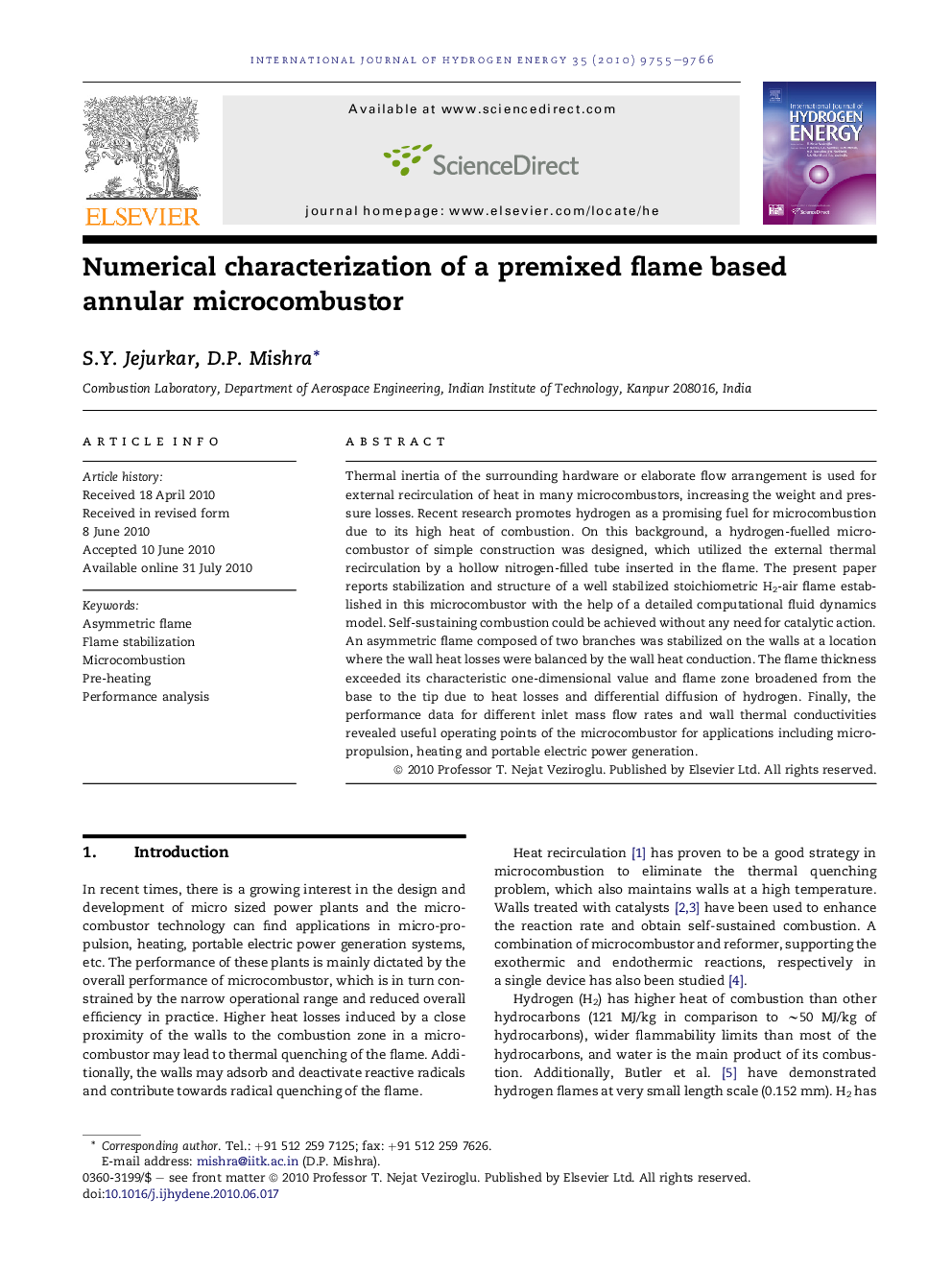| Article ID | Journal | Published Year | Pages | File Type |
|---|---|---|---|---|
| 1280269 | International Journal of Hydrogen Energy | 2010 | 12 Pages |
Thermal inertia of the surrounding hardware or elaborate flow arrangement is used for external recirculation of heat in many microcombustors, increasing the weight and pressure losses. Recent research promotes hydrogen as a promising fuel for microcombustion due to its high heat of combustion. On this background, a hydrogen-fuelled microcombustor of simple construction was designed, which utilized the external thermal recirculation by a hollow nitrogen-filled tube inserted in the flame. The present paper reports stabilization and structure of a well stabilized stoichiometric H2-air flame established in this microcombustor with the help of a detailed computational fluid dynamics model. Self-sustaining combustion could be achieved without any need for catalytic action. An asymmetric flame composed of two branches was stabilized on the walls at a location where the wall heat losses were balanced by the wall heat conduction. The flame thickness exceeded its characteristic one-dimensional value and flame zone broadened from the base to the tip due to heat losses and differential diffusion of hydrogen. Finally, the performance data for different inlet mass flow rates and wall thermal conductivities revealed useful operating points of the microcombustor for applications including micro-propulsion, heating and portable electric power generation.
